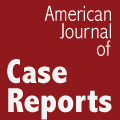Get your full text copy in PDF
Abdullah Z. Alotaibi
Med Sci Tech 2012; 53(1): RA23-28
ID: 883047
Background: Corneal topographic analysis has been established as an invaluable tool for the refractive surgeon. It permits the recognition of normal and abnormal patterns of ablation, documentation of decentrations following LASIK surgery. Little attention has been paid to the long-term effect of LASIK surgery on corneal surface remolding and the consequential effects on the stability of vision.
To evaluate the postoperative corneal changes on patients at the risk, after 5 years of undergoing LASIK surgery. Also, to assess the stability of vision within this period to determine if there was a significant topographic pattern changes.
Material/Methods: Subdividing our subjects (40 eyes) to three groups of risk factors depending on their corneal topographic patterns. Mean age of subjects were 32.3 years with a SEMR ranging from –1.75 D to –13.75 D and a manifest refractive cylinder of less than 4.00 D.
Results: There was a 100% and 92.9 improvement (p=0.001) in visual acuity in the groups with steep cornea and asymmetric bow tie respectively, and a 80% improvement (p=0.001) in the inferior steepening cornea group. Also, there was a change in topographic pattern of each group with normal patterns being only associated with Steep Cornea & Asymmetric Bow tie groups while corneal ecstasies were observed in 3 eyes belonging to the inferior steepening group.
Conclusions: Decreased thickness of residual Stroma, depth and width of ablation, older ages, increased myopic correction and abnormal corneal topography are some predisposing factors to unstable vision after LASIK correction. A significant change in VA and corneal topography were returned on assessment.
Keywords: LAISK, Corneal Topgraphy, vision



